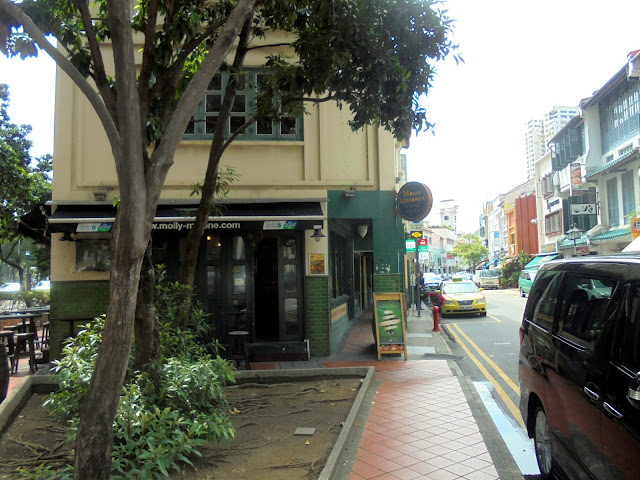|
Originally, we planned to stay longer in Asia and to spend the summer in the U.K. But when we had to return early because we lost our renter, we were at least able to visit friends in Singapore and retun to London before heading home. (We could change the dates on our round-the-world tickets free.) Our friend Shirley offered us her flat, but due to our change in plans, she was in Spain when we arrived. We missed her, but appreciated her generosity.
Shirley's brother's partner and our friend, Teresa, treated us to a delightful day at the Hepsibah Gallery. Teresa's neighbor, Meirion Harries, a talented photographer, was having a show there, shared with one of his friends, Jenni Hicks, a gifted ceramicist. They are both charming people.
|
 |
| Kevin with Teresa. Kevin, open your eyes! |
Every time we have come to London in the last few years, we have promised ourselves to explore Old Brompton Cemetery, and on this visit, we finally made it there. It's considered one of the "magnificient seven" private cemeteries of London that were opened in the 19th century. More than 200,000 people are buried there. In the spring, it is also a peaceful spot of green where bird song echoes and squirrels clamber over the monuments.
There is something about old cemeteries and monuments that resonate deeply with me. It's almost indefinable. It's not just a reminder of our mortality, although it is certainly that. We know we, too, will end in a plot of earth or an urn somewhere. And it's not just that there is a connection with those who placed the monuments to their loved ones. If we have known sorrow, we understand what was in their hearts, whether they were lords or ladies (as some buried in Brompton were) or people of simpler means. But if I can't put into words exactly what I feel, cemeteries are certainly places for reflection. On a spring day when the air is cool, and the sun's warmth touches your face, cemeteries also remind us to appreciate what it means to be alive.
And so, as our long journey ends--but not yet at the cemetery! We wonder what new adventures lie in store. Although our round-the-world trip is at an end, we haven't finished traveling. For a while those travels may not be far from our own back yard. But you don't have to travel far to see things, if you only look. You only have to open your eyes.
















































